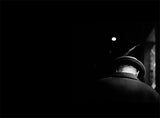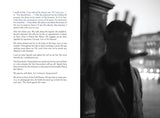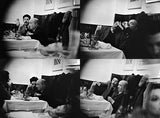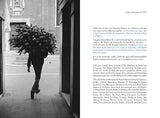"For months I followed strangers on the street. For the pleasure of following them, not because they particularly interested me. I photographed them without their knowledge, took note of their movements, then finally lost sight of them and forgot them.
At the end of January 1980, on the streets of Paris, I followed a man whom I lost sight of a few minutes later in the crowd. That very evening, quite by chance, he was introduced to me at an opening. During the course of our conversation, he told me he was planning an imminent trip to Venice. I decided to follow him." — Sophie Calle, Suite Vénitienne
***
In Suite Vénitienne, Sophie Calle’s first artist’s book—and the crucible of her inimitable and provocative fusion of investigatory methods, fictional constructs, the plundering of real life and the artful composition of self—she notates, in diaristic, time-stamped entries, her surveillance of Henri B. in Venice. She also carefully observes her own emotions as she searches for, finds and follows him. Intentionally losing herself as she wanders the labyrinthine streets of Venice, the city becomes a repository of her desires. She must remind herself that while it feels like she’s in love, she is not; that his elusivity may be more appealing than actually knowing him; and that the gap is wide between her own thoughts and his, which she cannot know.
Her investigation is both methodical (calling every hotel, visiting the police station) and arbitrary (sometimes following a stranger—a flower delivery boy, for instance—hoping someone might lead her to him). She sometimes tells the truth (when she enlists Venetian friends of her own friends who lend a phone, a look-out point, and make inquiries on her behalf). And sometimes she does not, inventing stories to entice strangers to come to her aid.
Once she does find him and follows him, “what we see,” as Larry Rinder writes in his essay “Sophie Calle and the Practice of Doubt,” “is not the object in closer view but the measure of the distance in between.” Henri B., as he wanders and photographs Venice often in the company of another woman, is still an enigma whom Calle observes from the semi-obscurity of the shadows where she hides in disguise. Once he confronts her—after she has ventured too close—he tells her she should’ve masked her eyes which is what ultimately gave her away.
This Siglio reissue is a completely new iteration of Suite Vénitienne, designed in collaboration with Calle, to be the definitive English-language edition. Printed on Japanese paper with a die-cut hard cover and gilded edges, this new, beautiful Siglio edition allows readers to devour this compelling and crucial work.
Published in 2015.













